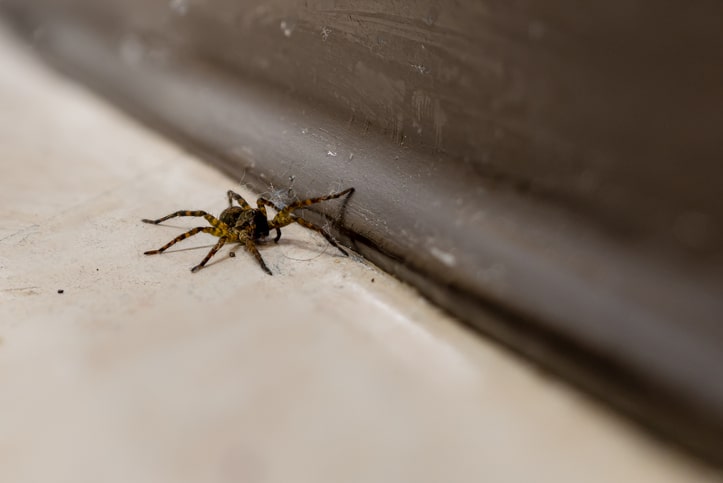With the cold weather starting to nip at our extremities, particularly at night, you will likely notice an increase in pest activity that may be trying to come into your home. One of those little pests has eight legs and can give most folks the creeps. We’re talking about spiders! If you have a spider problem at home, here’s what you need to know!
Spiders – Safety First
There are spiders that can be dangerous to us and cause a potential threat, but luckily we don’t have many that reside in our province. Here’s what you need to watch out for here in Alberta when it comes to dangerous spiders:
– Western Black Widow : characterized by its iconic red hourglass marking on its abdomen, black widow spiders can be found in the southern prairies where it’s drier and hotter. If bitten by one of these spiders, seek medical attention immediately and remain calm.
– Hobo Spider : thought to be originally venomous because they’re often confused with other dangerous spiders, Hobo spiders don’t pack a lot of toxic venom, but they can pack a bite. It won’t force you to go to the hospital, but a Hobo spider bite can be painful and cause mild swelling and redness.
– Brown Recluse : These spiders are what Hobo spiders get confused with and the venom can sometimes cause dangerous wounds and should be treated immediately. Known for the fiddle-like marking on their bodies, brown recluse spiders aren’t native to Alberta, but can sometimes make their way in via shipments and deliveries.
If you’d like to know more about the spiders that live in our province or what types you can find, visit this website to discover the most common spiders you’ll find in Alberta!
Signs of Spider Infestations
How can you tell if the presence of spiders is just a friendly house spider or two or a full-blown nest of arachnids? Here are signs to help you identify if that spider issue is something you’ll need to call in some backup for.
1. The presence of egg sacs, which can be well hidden or in an active web!
2. An excess of webs is a sure sign of spiders, you might even find them in the web, but pay attention to whether they’re cobwebs or active webs.
3. An increase in spider sightings around your home.
4. More flying insect presence in your home can indicate a surge in the spider populations as spiders will follow food sources.
How to Deter Spiders
Whether you’re in the prevention stage or you’re already dealing with spiders, you can use the following aids to help you deter them from your home!
– Peppermint, eucalyptus and tea tree oils are natural spider deterrents and can be individually diluted into a spray to use around entry points of your home.
– Repair screens, weatherstripping and other potential places pests can access your home.
– White vinegar makes most pests run for the hills and can be used to clean and disinfect your home.
– Removing clutter, both in your yard and in your home, leaves fewer hiding places for pests.
– Seal up any cracks and crevices spiders can make their way into along the foundation of your home.
If spiders are the last creepy crawly you want to deal with, don’t be afraid to get in touch with an expert. Even with preventative measures, spider populations can explode and cause you more distress than it’s worth. Our friendly technicians will assess the issue and help you develop a plan that will eliminate any infestation. Give us a call at (403) 262-1666 or fill out our online form today!



